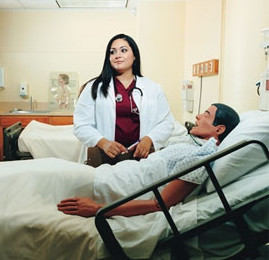After I decided to leave the assignment in Tampa, FL early, I was planning on just taking a vacation. However, one of my recruiters insisted he had the perfect assignment for me. It would only be 3 weeks long (covering an FMLA) and would consist of working with a migrant community of mostly Hispanics and Haitians. Since I speak some Spanish and Haitian Creole, I figured why not.
The agency had already submitted 10 candidates that the site was reviewing. My recruiter was confident that I still had a chance because of my work experience and language skills. They selected me as one of the top 3 candidates and proceeded with a phone interview. It seemed like a good place to work, so when they offered me the job I said yes.
The site was about 2 hours from my home in Miami, FL so I was provided with a hotel during the weekdays, and I went home during the weekend. I was reimbursed for daily mileage to work and mileage home each weekend. Since I had a long commute, the site even allowed me to leave 1 hour early each day (paid for full shift) to make up for it.
This is a community medical center, one of the goods ones as I portrayed in my previous post. Since it was a brief assignment, I didn’t expect an extensive training. My first day, I completed the mandatory OSHA/HIPPA etc. training during the morning. In the afternoon, I was introduced to the EHR system. The funny thing is they originally offered me a scribe. Meaning, I wouldn’t have to document, there would be someone following me and documenting my encounter with the patient. I thought, wow that’s neat. Some of the providers here have scribes, if they aren’t comfortable or too slow with the EHR. That’s a nice gesture to support their PCPs.
I told the manager that I didn’t need a scribe, as I am used to jumping into places and learning the systems quickly.
They used Athena EHR which was straightforward, and by the next day I was already pretty competent. They also had an IT person on site available to me in case I needed any assistance.
I really enjoyed working at this community medical center. I had two medical assistants, which meant I never had to wait or look for help. The patients were pleasant, not as demanding as the previous practice I was at. My schedule was fair – I averaged about 12-14 patients per day (of course there were no shows).
Another funny thing is that everyone was so impressed. They were surprised how quick I was, and told me that the patients were used to waiting 2-3 hours to be seen. They were also amazed by how quickly I learned how to use the EHR system. I have been used to working with such a complex elderly population over the past 1.5 years that these average patients seemed so ‘basic’ to me.
I forgot how easy it is to manage a 40 year old patient with just hypertension and hyperlipidemia versus managing an 82 year old patient with hypertension, hyperlipidemia, diabetes, heart failure, angina, arthritis, hepatitis C, cancer, depression, insomnia, obesity, glaucoma, kidney disease. No joke!
The only challenge for me at this site was getting accustomed to the diagnostic coding and billing sections again. I had been working in a ‘managed care’ setting over the past 1.5 years so the diagnostic coding is much different. For instance, at this community medical center I had to make sure I specified physical exam with or without abnormal findings, normal or abnormal BMI (and which value). In comparison to the managed care setting, we didn’t use those diagnoses much. We mostly focused on HCC codes, which are codes that can bill at a higher rate and represent how sick our patient is. So if a patient was overweight, it didn’t matter as much as if a patient was morbidly obese, if that makes sense (billing wise, not medically).
Like anything though, the more you start to do something again the more it becomes familiar. It was the same with doing well child check ups. I was so used to treating complex geriatric patients that I had to do a few well child exams before I was confident in them again.
In conclusion, this assignment deserves an A+. On my last day, the CEO came all the way to our clinic just to meet me and tell me “I have heard such great things about you!” He came prepared to make me a permanent offer, but I told him (in a nice way) not to even bother J. He told me they would love to have me again when there is another need. I definitely wouldn’t mind helping them again. I hope other sites can take a lesson from this one – PCPs like to be appreciated!












